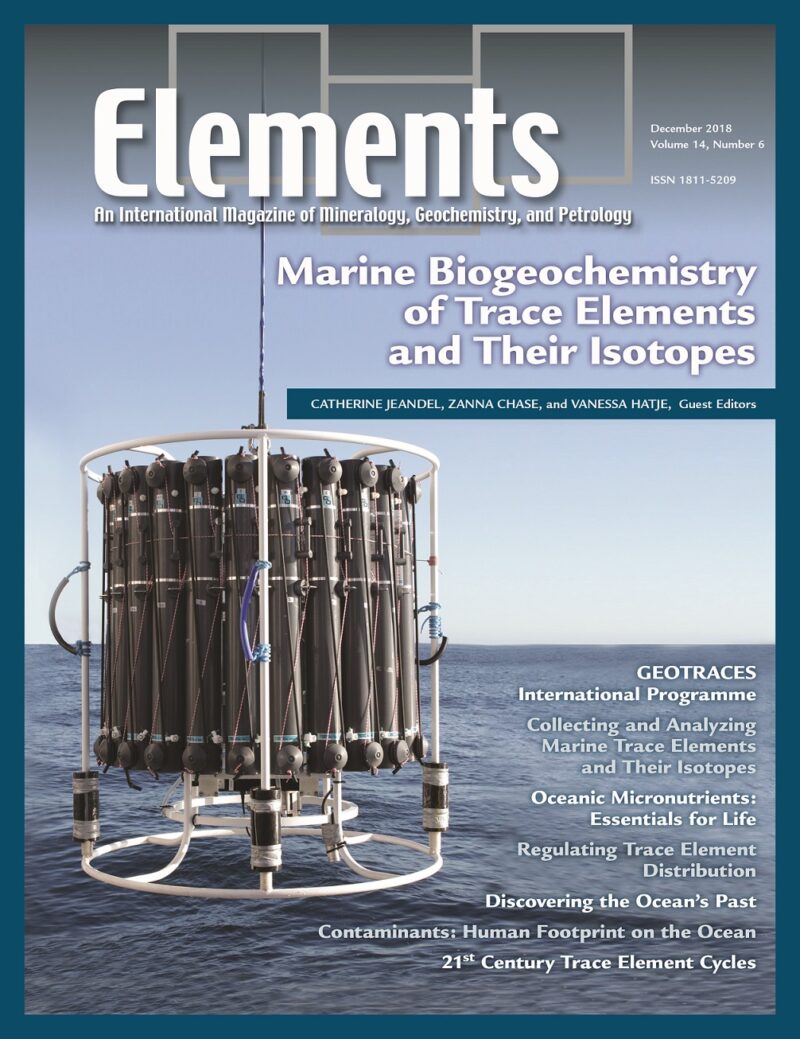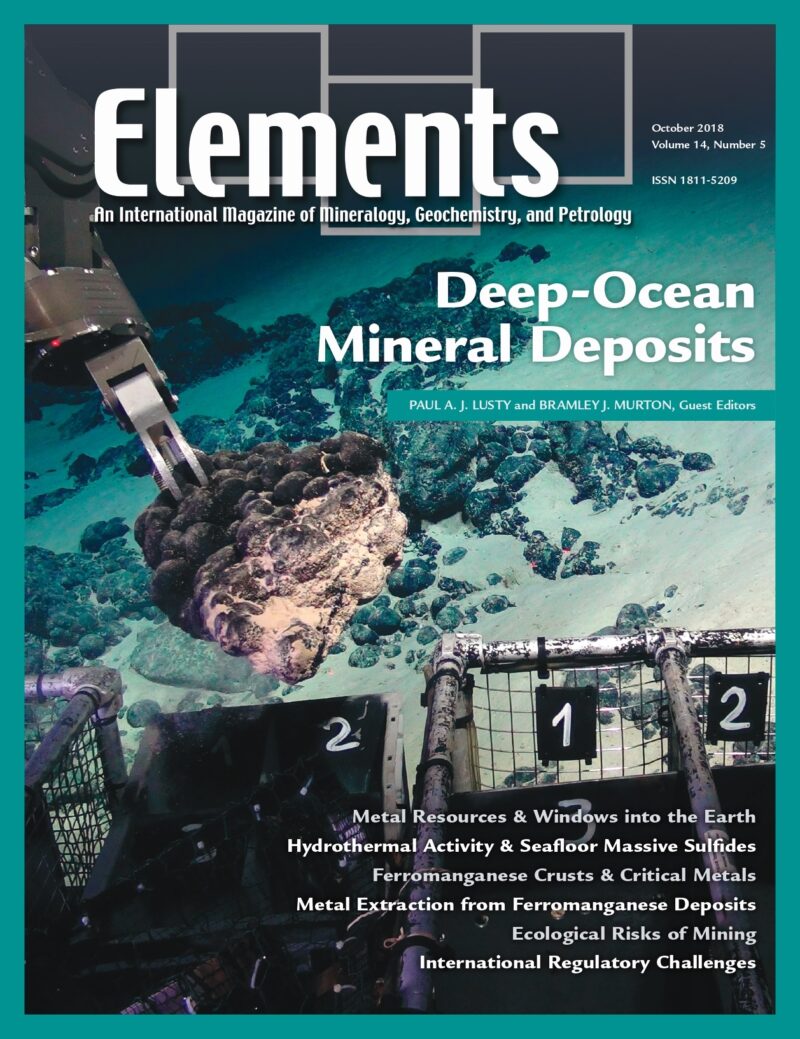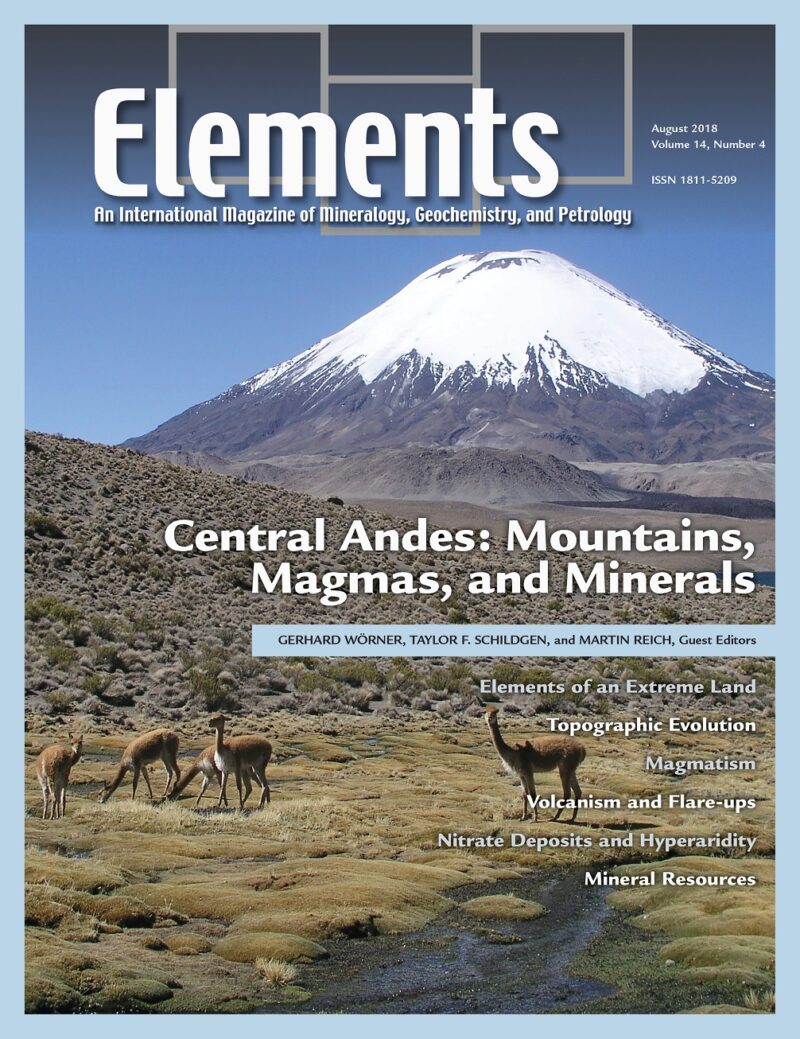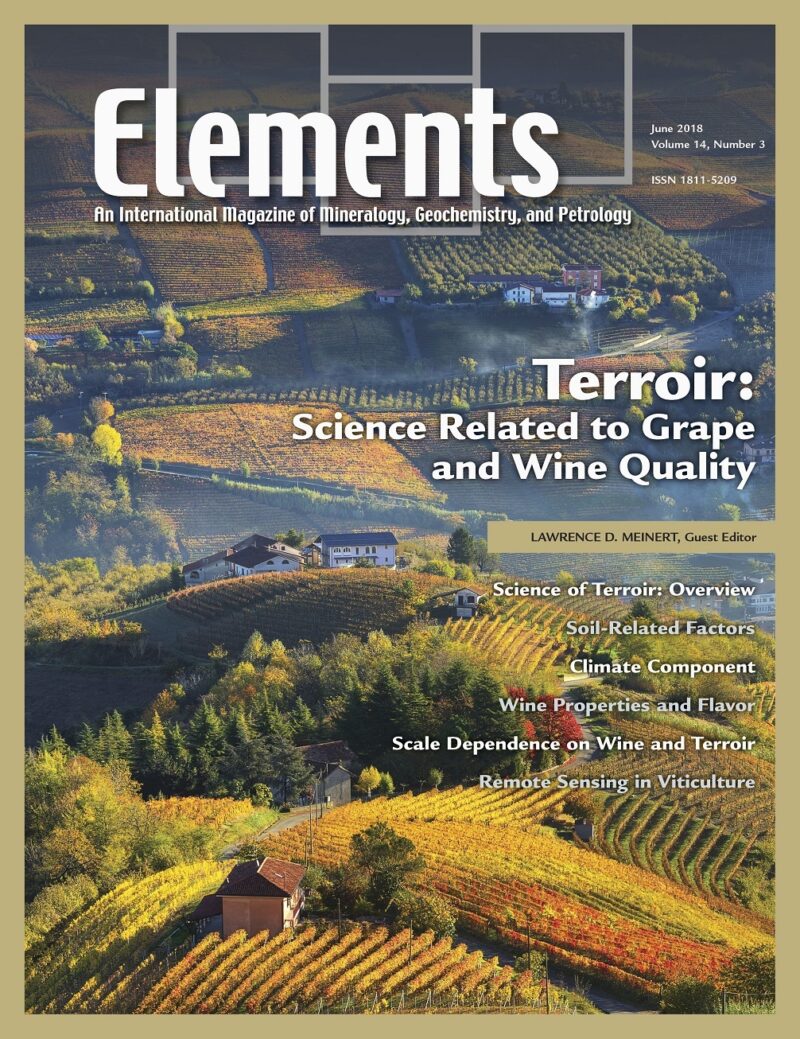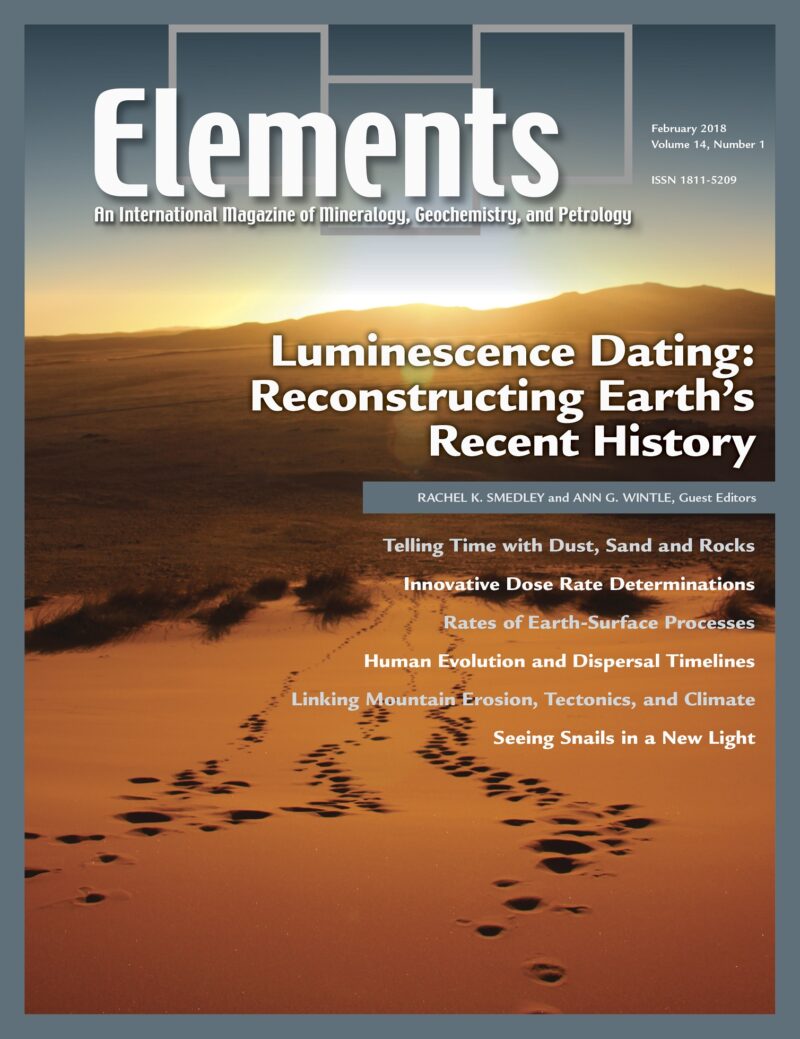-
Marine Biogeochemistry Of Trace Elements And Their Isotopes, December 2018, Vol. 14, No. 6
$20.00The field of marine geochemistry is exploding these last two decades. During the 1980s and 1990s, the scientific community developed a geochemical toolbox to study key ocean processes, based on the concentration and isotopic composition of trace elements.
-
Deep-Ocean Mineral Deposits, October 2018, Vol. 14, No. 5
$20.00Significant deposits of metal-rich minerals are known to exist on the deep-ocean floor, in some instances exceeding global land-based resources. In recent years, advances in understanding and technology coupled with an evolving regulatory regime have resulted in growing interest in mining these deposits.
-
Central Andes: Mountains, Magmas, And Minerals, August 2018, Vol. 14, No. 4
$20.00The Central Andes in South America are a first-order geological structure on our planet of an active continental margin. The link between subduction-related magmatism and processes and timing of uplift and volcanism shaped the Andean Cordillera and provides unique examples of the andesite magma generation during passage through thickened crust.
-
Terroir – Science Related To Grape And Wine Quality, June 2018, Vol. 14, No. 3
$20.00This special issue explores the physical environment that shapes the character and quality of wine, ranging from geology and soils to viticulture and climate. It also discusses some of the technological advances such as drones, remote sensing, and precision agriculture, that are revolutionizing the production of fine wine.
-
Comets, April 2018, Vol. 14, No. 2
$20.00It is now possible, for the first time, to synthesize what has been learned regarding the mineralogy, geochemistry, and geology of comets from the Giotto, Vega, Stardust, Stardust NEXT, Deep Impact, and Rosetta missions to comets Halley, Wild 2, Borrelly, Tempel 1, and Churyumov– Gerasimenko. Articles in this issue describe the nature of cometary inorganic phases, volatiles, notable water, and organics.
-
Luminescence Dating: Reconstructing Earth’s Recent History, February 2018, Vol. 14, No. 1
$20.00Luminescence dating is a geochronological tool used to determine the timing of sediment burial, pottery firing, mountain evolution, mineral formation and the exertion of pressure. The luminescence dating technique covers a large age range from modern-day to hundreds of thousands of years using conventional methods, or even up to millions of years according to recent developments.

